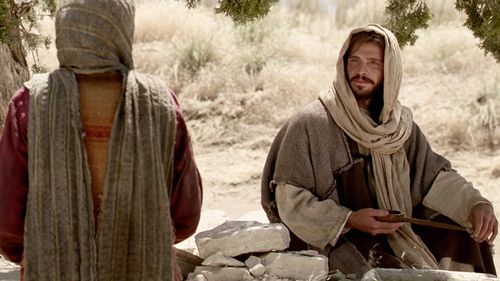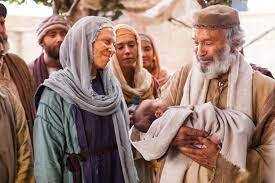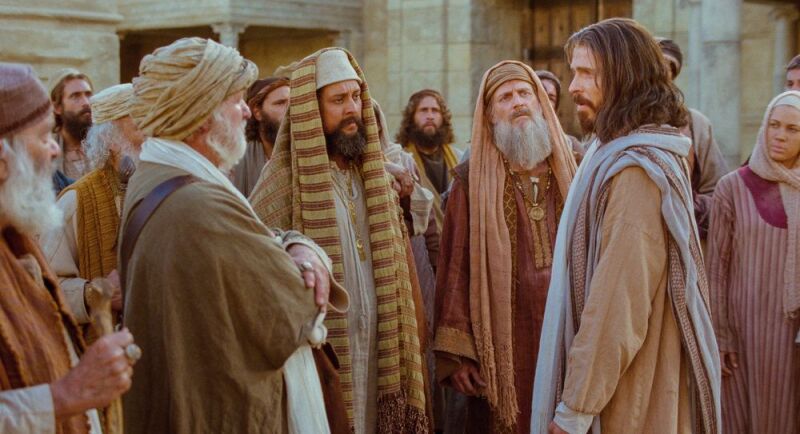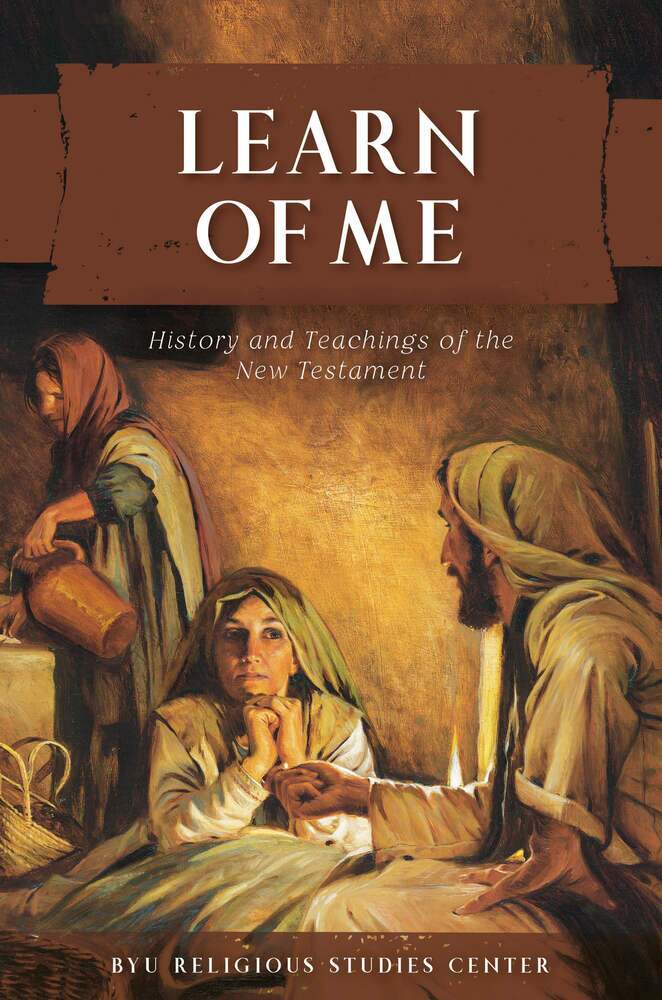Author Gaye Strathearn is a professor in the Department of Ancient Scripture and in the Ancient Near East Studies program at BYU. She has taught at BYU since 1995, including a year at BYU’s Jerusalem Center for Near Eastern Studies. Her research centers primarily on New Testament topics, especially those of interest to Latter-day Saints.
The following excerpt comes from an essay in “Learn of Me: History and Teachings of the New Testament” from the BYU Religious Studies Center. Strathern explains and discusses the concept of a “gospel” in the scriptures and outlines some of the differences between each ancient author‘s intentions and perspectives in their writing.
The genre of a “gospel” seems to have been invented by Mark. He is the only New Testament Gospel author who identifies his work as such: “The beginning of the gospel of Jesus Christ, the Son of God” (Mark 1:1). The Greek word for gospel, euangelion, literally means “the good message,” and for Mark the good message begins at the baptism where “a voice from heaven [declares], Thou art my beloved Son, in whom I am well pleased” (Mark 1:11). Mark’s concept of a gospel seems to have been generally informed by the Greco-Roman biography, or bios, which was “less concerned with relating historical events than with showing the character of the main figure through his or her words, deeds, and interactions.”2 What distinguishes it from the bios is its reliance on the Old Testament, its emphasis on Jesus’s divine purpose rather than on extolling his virtues, and its usefulness in the preaching of the Church. One scholar has noted, “The close association of the Gospels with early Christian worship and proclamation suggests that we should see them as church documents with a certain biographical character rather than as biographies with a religious tone.”3
The Gospels of Matthew, Mark, and Luke are remarkably similar to each other, yet very different from the Gospel of John. They are often referred to as the “synoptic Gospels,” which means that they present the life of the Savior in similar ways, including frequent verbal parallels. The similarities are so significant that many scholars have proposed a literary relationship between the first three Gospels. The most common explanation of this literary relationship, known as Markan Priority, posits that Mark’s Gospel was written first and then Matthew and Luke each used the Gospel of Mark as a source for their own accounts, to which they added sayings of Jesus and some of their own unique material.4

Although not all scholars accept the argument of Markan priority, three points in particular make this conclusion probable. First, Matthew and Luke generally follow the Markan sequence of events, even though Papias (an early second-century bishop of Hierapolis) says that Mark was not interested in writing the events in order.5 When Matthew and Luke disagree with Mark’s chronology, the differences can usually be explained as the result of Matthean and Lukan editorial tendencies. Significantly, Matthew and Luke never agree on the sequence of events when they differ from Mark. Second, there is evidence that Matthew and Luke have “corrected” the Markan account. For example, when Mark uses a rare or difficult word, Matthew and Luke render the passage using more common terminology, and they often improve his grammar.6 Sometimes they will modify passages that provide theological difficulties for them. For example, Mark 6:5 says that Jesus “could there do no mighty work, save that he laid his hands upon a few sick folk, and healed them.” Matthew’s account avoids the implication that Jesus’s power was in any way limited: “And he did not many mighty works there because of their unbelief” (Matthew 13:58). Third, a primary reason for concluding that the Gospel of Mark is the earliest Gospel is the fact that it is the shortest. It is more likely that Matthew and Luke would later add additional material about the life of Christ than that Mark would purposefully omit so many good stories about the Savior. Mark does not have a tendency to shorten stories, because when Matthew, Mark, and Luke contain the same story, Mark often preserves the longer version.7
John’s Gospel is very different from the Synoptic Gospels. In fact, the majority of its teachings, stories and miracles are not found in the Synoptic Gospels. It uses a high Christology to describe Jesus, meaning that, to a greater extent than the Synoptic Gospels, from its opening chapter John’s Gospel emphasizes Jesus’s divinity.8 Thus, Clement of Alexandria described it as “a spiritual gospel.”9
As we would expect, all four Gospels testify that Jesus is the Messiah or Son of God, although each does it in different ways, with different emphases, because the authors are all writing to different audiences.
Mark’s Gospel
Mark does not appear to be an eyewitness of Jesus’s ministry. Instead, Papias, the second-century bishop of Hierapolis, records that “Mark, having become Peter’s interpreter, wrote down accurately everything he remembered, though not in order, of the things either said or done by Christ. For he neither heard the Lord nor followed him, but afterward, as I said, followed Peter, who adapted his teachings as needed but had no intention of giving an ordered account of the Lord’s sayings. Consequently, Mark did nothing wrong in writing down some things as he remembered them, for he made it his one concern not to omit anything which he heard or to make any false statement in them.”10 Thus, although Mark was apparently a second-generation Christian,11 he wrote down the memories of Peter.
Mark appears to be writing to a gentile audience who live outside of Palestine because he explains geography (Mark 13:3), translates Aramaic phrases (5:41; 15:34), uses Latin terms such as legion (5:9, 15) and centurion (15:39), interprets Jewish customs (7:3–4), and mentions Roman, rather than Jewish, divorce laws (10:11–12).

After the baptism, Mark’s account moves quickly. It focuses on showing that Jesus’s teachings and deeds were astonishing to his audiences (1:22; 5:42; 6:2; 7:37; 10:24, 26; 11:18). It shows that there is a cost in choosing to be one of Jesus’s disciples. The result of John the Baptist’s preaching was that he was “put in prison [paradidomi]” (Mark 1:14). The result of Jesus’s preaching was that he was “betrayed [paradidomi] into the hands of sinners” (Mark 14:41). Likewise, for the disciples, who are also expected to preach, there is an expectation that they will also be delivered up (paradidomi; see Mark 13:9–10). Lastly, it emphasizes the suffering and eventual vindication of the Savior. Sometimes Mark’s Gospel is described as “a Passion narrative with an extended introduction.”12 In other words, the account frequently points the reader to, and focuses on, the events on the cross (3:6; 8:31; 9:31; 10:33–34, 45; 15:15–41). The Resurrection is God’s vindication of Jesus after the horrible events of the passion.13 Mark’s Gospel is written to show that despite opposition, misunderstanding, suffering for sins, and an ignominious death, Christ was able to triumph over all things.14
Matthew’s Gospel
Matthew was a member of the Twelve writing to a Jewish audience for two main purposes. He wrote to convince his audience that Jesus was the fulfillment of messianic prophecy. Matthew goes to great lengths to attach Old Testament prophetic statements to Jesus’s deeds. He frequently uses the phrase “as it is written” (Matthew 2:5; 4:4, 6–7, 10; 11:10; 21:13; 26:24, 31), although on one occasion he attributes the passage to Jeremiah when it is actually from Zechariah (see Matthew 27:9; see by comparison Zechariah 11:13). Additionally, Matthew seeks to show that Jesus is the “new Moses.” He is the only Gospel author to link Jesus’s story to that of Moses by including the stories of the holy family’s trip to Egypt and the slaughter of the innocents (see Matthew 2:14, 16). Just as Moses received the law on a mountain, Jesus goes up into a mountain to give the new law (Matthew 5:1; in contrast with the Lukan version, Luke 6:17, where it is given on a plain).
Given his Jewish audience, it is not surprising that he includes in Jesus’s apostolic commission the directive to “go not into the way of the Gentiles and into any city of the Samaritans enter ye not: but go rather to the lost sheep of the house of Israel” (Matthew 10:5–6).
But Matthew’s Gospel seems also to have been written to convince his audience to accept the gentile mission.15 In a number of places he includes gentiles, showing that they were an important part of the kingdom: he includes four gentile women in Jesus’s genealogy (Matthew 1:1–6); he includes the story of the Wise Men, whom Matthew sees as gentiles, who recognize the child Jesus when the people of the covenant, who had access to the prophecies, do not (Matthew 2:1–11); and he includes stories which show times when Gentiles’ faith is so remarkable that it overshadows that of the covenant people (see Matthew 8:5–13; 15:21–29). All these aspects of Matthew’s Gospel prepare the reader for Jesus’s final words on the Mount of Olives, “Go ye therefore, and teach all nations, baptizing them in the name of the Father, and of the Son, and of the Holy Ghost” (Matthew 28:19).
Luke’s Gospel

Like Mark, Luke also appears to be a second-generation Christian writing to a gentile audience. He opens his Gospel with his own “statement of intent” to Theophilus: “Forasmuch as many have taken in hand to set forth in order a declaration of those things which are most surely believed among us, even as they delivered them unto us, which from the beginning were eyewitnesses, and ministers of the word; it seemed good to me also, having had perfect understanding of all things from the very first, to write unto thee in order, most excellent Theophilus, that thou mightiest know the certainty of those things, wherein thou hast been instructed” (Luke 1:1–4).
The major purpose of Luke’s writings (including the book of Acts) is to show that the gospel of Jesus Christ is available to all. Luke, unlike Matthew, extends Jesus’s genealogy back to Adam, the father of all humans, rather than just to Abraham (see Luke 3:38; see by comparison Matthew 1:1). His is the only Gospel to include the calling of the Seventy (Luke 10) in addition to the Twelve (Luke 6:13–16; 9:1–6). The number seventy may have reference to the seventy nations mentioned in Genesis 10 and may, therefore, prefigure the expanded mission in Acts that includes the Gentiles.16 Luke includes Jesus’s sermon given on a plain to “the company of his disciples, and a great multitude of people out of all Judaea and Jerusalem, and from the sea coast of Tyre and Sidon [i.e., Gentiles]” (6:17). He shows Jesus’s concern for those who were deemed “marginal” in Jewish society: the poor (6:20), the Samaritans (10:29–37; 17:11–19), and women, often using couplets of men and women such as Simeon and Anna testifying of Jesus at the temple (2:25–38) and the disciples and the women accompanying Jesus on his journey to Jerusalem (8:1–3).
John’s Gospel
John also includes a specific “statement of intent,” although unlike in Luke, it is at the conclusion of his Gospel. He indicates that he chose what to include in his Gospel (and what to leave out) for a specific reason: “But these things are written, that ye might believe that Jesus is the Christ, the Son of God; and that believing ye might have life through his name” (John 20:31). Unlike the Synoptic Gospels, which concentrate on Jesus’s Galilean ministry, John’s Gospel concentrates on his Judean ministry. In addition, John includes frequent passages that contribute to this Gospel’s high Christology. John opens his Gospel with a statement of Jesus’s divinity in the premortal realm. “In the beginning was the Word and the Word was with God and the Word was God” (John 1:1). This theme is then expanded throughout the text. He frequently records Jesus using the divine name to identify himself (“before Abraham was, I am [egō eimi]” in John 8:58 but also in John 4:25–26; 6:20). He also records numerous dialogues where he, as the “one from above,” converses with those that are “of the earth” (John 3:31; see also 3:12–13; 8:23). The purpose of these dialogues is for Jesus to help his listeners throw off the earthly blinders that limit their perspective so that they can begin to see as he sees and gain an eternal perspective (e.g., 3:1–21; 4:5–42; 9:1–41; 11:1–16).17

Thus, each of the four Gospels adds a distinctive witness to his life and ministry, which if recognized, can add an important and enriching element to teaching the life and ministry of the Savior.
Learn of Me: History and Teachings of the New Testament
Notes
- “Letter to the Church, circa March 1834,” p. 142, The Joseph Smith Papers.
- Bart D. Ehrman, The New Testament: A Historical Introduction to the Early Christian Writings, 3rd ed. (Oxford: Oxford University Press, 2004), 65.
- Larry W. Hurtado, “Gospel (Genre),” in Dictionary of Jesus and the Gospels, ed. Joel B. Green, Scot McKnight, and I. Howard Marshall (Downers Grove, IL: 1992), 279.
- Robert H. Stein, Studying the Synoptic Gospels: Origin and Interpretation, 2nd ed. (Grand Rapids, MI: Baker Academic, 2001), 49–96; see also Elder Bruce R. McConkie, Doctrinal New Testament Commentary, 3 vols. (Salt Lake City: Bookcraft, 1965–73), 1:69.
- English translation from Michael W. Holmes, ed., The Apostolic Fathers: Greek Texts and English Translations (Grand Rapids, MI: Baker Books, 1992), 569.
- For more detailed discussions, see W. D. Davies and Dale C. Allison Jr., A Critical and Exegetical Commentary on the Gospel According to Saint Matthew (Edinburgh: T&T Clark, 1988), 1:105–6; and Stein, Studying the Synoptic Gospels, 56–59.
- For examples, see Stein, Studying the Synoptic Gospels, 50–56.
- For a Latter-day Saint discussion on the sources for the four Gospels, see Thomas A. Wayment, “First-Century Sources on the Life of Jesus” in How the New Testament Came to Be, ed. Kent P. Jackson and Frank F. Judd Jr. (Provo, UT: Religious Studies Center, Brigham Young University; Salt Lake City: Deseret Book, 2006), 112–22. For a non-LDS discussion, see James D. G. Dunn, Jesus Remembered, vol. 1 of Christianity in the Making (Grand Rapids, MI: William B. Eerdmans, 2003), 1:139–72.
- Eusebius, The History of the Church from Christ to Constantine, trans. G. A. Williamson (New York: Penguin, 1965), 192.
- English translation from Michael W. Holmes, ed., The Apostolic Fathers: Greek Texts and English Translations (Grand Rapids, MI: Baker Books, 1992), 569; emphasis added. Another fragment from Papias outlines his intent in recording remembrances of the teachings of the early Church leaders, “I will not hesitate to set down for you, along with my interpretations, everything I carefully learned then from the elders and carefully remembered, guaranteeing their truth. For unlike most people I did not enjoy those who have a great deal to say, but those who teach the truth. Nor did I enjoy those who recall someone else’s commandments, but those who remember the commandments given by the Lord to the faith and proceeding from truth itself. And if by chance someone who had been a follower of the elders should come my way, I inquired about the words of the elders—what Andrew or Peter said, or Philip, or Thomas or James, or John or Matthew or any other of the Lord’s disciples, and whatever Aristion and the elder John, the Lord’s disciples, were saying. For I did not think that information from books would profit me as much as information from a living and abiding voice.” English translation from Holmes, Apostolic Fathers, 565.
- Some have speculated that the unnamed young man in Mark 14:51 was a reference to Mark, although there is no scriptural basis for it. For a brief discussion, see R. T. France, The Gospel of Mark: A Commentary on the Greek Text (Grand Rapids, MI: Eerdmans; Carlisle, England: Paternoster Press, 2002), 595–96.
- Dennis C. Duling, The New Testament: History, Literature, and Social Context, 4th ed. (Belmont, CA: Thomson Wadsworth, 2003), 324.
- The issue of where Mark’s Gospel ends is complex. For two recent LDS discussions on the issues, see Thomas A. Wayment, “The Endings of Mark and Revelation,” in The King James Bible and the Restoration, ed. Kent P. Jackson (Provo, UT: Religious Studies Center, Brigham Young University; Salt Lake City: Deseret Book, 2011), 75–81; and Lincoln H. Blumell, “A Text-Critical Comparison of the King James New Testament with Certain Modern Translations,” Studies in the Bible and Antiquity 3 (2011): 89–96. For a non-LDS discussion, see France, The Gospel of Mark, 695–98.
- Gaye Strathearn and Frank F. Judd Jr., “The Distinctive Testimonies of the Four Gospels,” Religious Educator 8, no. 2 (2007): 60–64.
- For an expanded discussion, see Strathearn and Judd, “Distinctive Testimonies,” 64–69.
- Richard D. Draper, “Counting the Cost: The Apostolic Mission of the Twelve and Seventy,” in The Life and Teachings of Jesus Christ, vol. 2, From the Transfiguration through the Triumphal Entry, ed. Richard Neitzel Holzapfel and Thomas A. Wayment (Salt Lake City: Deseret Book, 2006), 35–40. Some important manuscripts indicate that the number was seventy-two. See for example, Codices Sinaiticus, Alexandrinus, Ephraemi, Regius. Nevertheless, scholars still see this passage as indicative of an expanded mission. See, for example, I. Howard Marshall, The Gospel of Luke: A Commentary of the Greek Text (Grand Rapids, MI: Eerdmans, 1978), 415.
- Gaye Strathearn, “Johannine Christology through the Lens of Three of Its Dialogues,” in Thou Art the Christ, the Son of the Living God: The Person and Work of Jesus in the New Testament, ed. Eric D. Huntsman, Lincoln H. Blumell, and Tyler J. Griffin (Provo, UT: Religious Studies Center, Brigham Young University; Salt Lake City: Deseret Book, 2018), 153–74.


